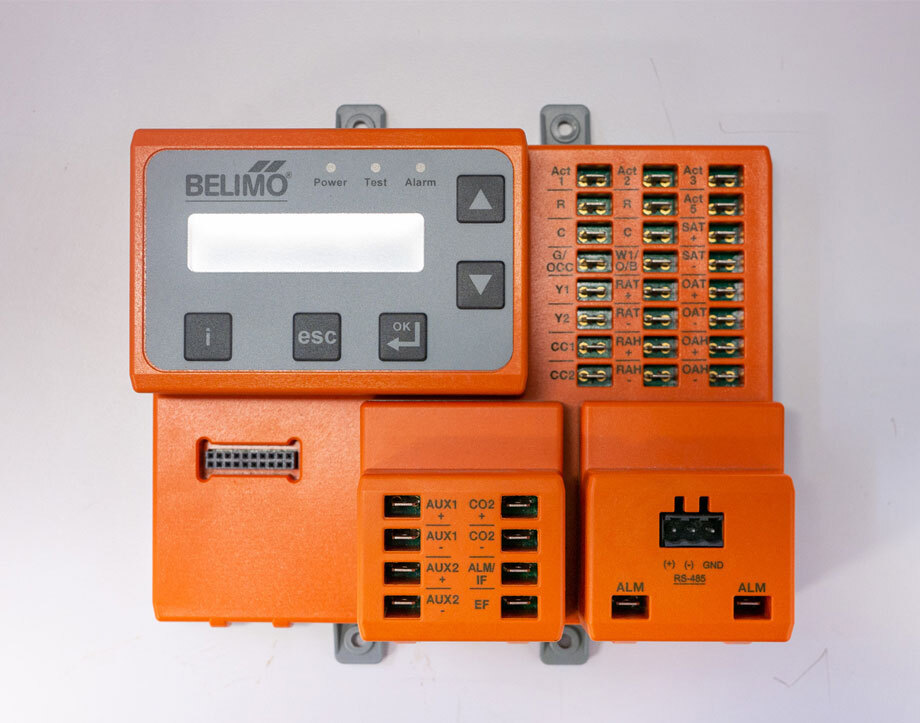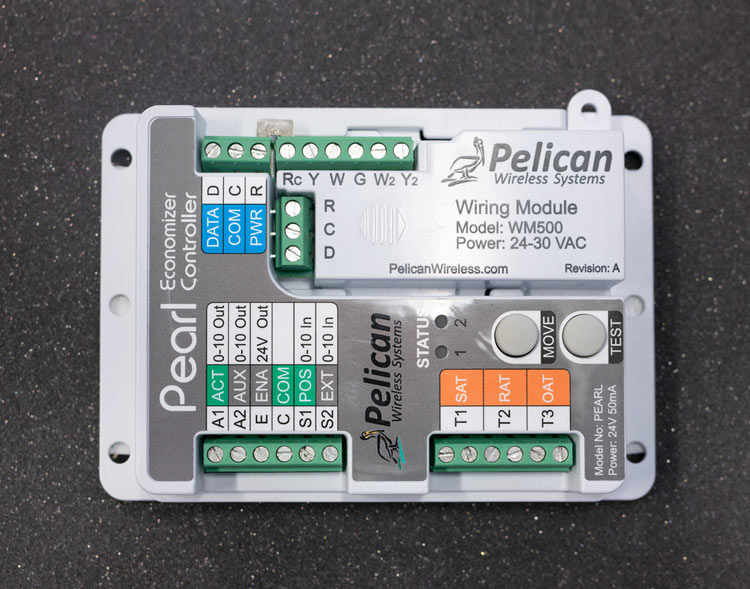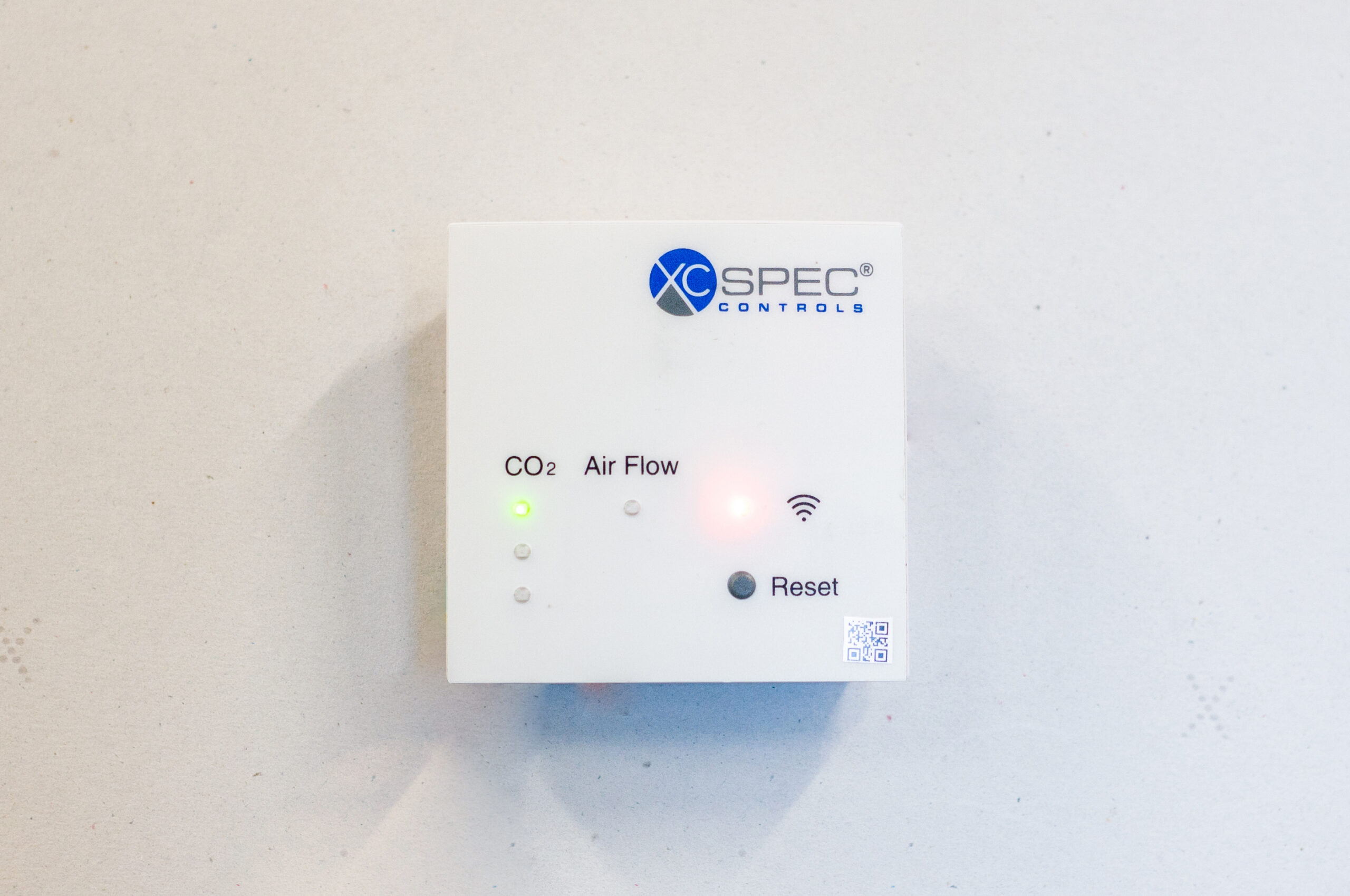Ventilation controller with economizer with modular upgrade to allow for CO2-based demand control ventilation capabilities.
- Monochrome LCD display and buttons for commissioning, troubleshooting, or viewing status.
- Optional module available for BACnet MS/TP communication.
- Good performance under Hub simulated occupancy profiles.
- Modular expansions available.
Ventilation controller with economizer with available inputs for CO2-based demand control ventilation capabilities. Using Honeywell Sulk Bus enabled sensors enables more fault detection features. Two configurations were evaluated (fast and slow).
- Monochrome LCD display and buttons for commissioning, troubleshooting, or viewing status.
- No direct connection to building management system.
- Great performance under Hub simulated occupancy profiles.
- Purchasing a USB adapter allows PC based commissioning software to be used. This will allow the user to choose a "fast" mode which performed better in Hub testing protocols.
Ventilation controller with economizer with available inputs for CO2-based demand control ventilation capabilities. Using Honeywell Sulk Bus enabled sensors enables more fault detection features. Two configurations were evaluated (fast and slow).
- Monochrome LCD display and buttons for commissioning, troubleshooting, or viewing status.
- No direct connection to building management system.
- Great performance under Hub simulated occupancy profiles.
- Purchasing a USB adapter allows PC based commissioning software to be used. This will allow the user to choose a "fast" mode which performed better in Hub testing protocols.
- Controller CO2 Sensor Input Signal Types 2-10 VDC, 0-2000 ppm Analog or Sylk bus TR40 CO2 sensor
Ventilation controller with economizer with available inputs for CO2-based demand control ventilation capabilities.
- Monochrome LCD display and buttons for commissioning, troubleshooting, or viewing status.
- BACnet MS/TP supported.
- Good performance under Hub simulated occupancy profiles.
- CO2 Sensor Compatibility Universal – Works with any CO2 sensor that has the ability to output compatible signal
Ventilation system controller with economizer and CO2-based demand control ventilation capabilities. The device may be configured locally or with wired communication protocols.
- Color touchscreen display.
- BACnet MS/TP supported.
- Good performance under Hub simulated occupancy profiles.
- Also functions as a thermostat.
- Economizer Control Options Single dry bulb change over; Single enthalpy change over; Differential enthalpy change over
Ventilation system controller with economizer and CO2-based demand control ventilation (DCV) capabilities. The device may be configured and monitored wirelessly with Pelican’s Connect web-app. The controller performance was tested at Pelican’s recommended setting of 800 PPM and at 1000 PPM.
- No on-board display, device configuration and monitoring through Pelican Connect web-app.
- Proprietary three wire data connection to a Pelican thermostat to access wireless connection to gateway.
- Integrates with other building automation systems using Pelican’s application programming interface (API).
- Good performance under Hub simulated occupancy profiles at recommended setting.
- Cloud-based controls enable seamless software updates to connected devices
Ventilation system controller with economizer and CO2-based demand control ventilation (DCV) capabilities. The device may be configured and monitored wirelessly with Pelican’s Connect web-app. The controller performance was tested at Pelican’s recommended setting of 800 PPM and at 1000 PPM.
- No on-board display, device configuration and monitoring through Pelican Connect web-app.
- Proprietary three wire data connection to a Pelican thermostat to access wireless connection to gateway.
- Integrates with other building automation systems using Pelican’s application programming interface (API).
- Good performance under Hub simulated occupancy profiles at recommended setting.
- Cloud-based controls enable seamless software updates to connected devices
Ventilation system controller with economizer and CO2-based demand control ventilation capabilities. The device may be configured and monitored wirelessly with XCSpec’s Mini Access Point.
- LED status indicators, information and commissioning available through integrated WiFi.
- WiFi connection but no supported building management system (BMS) protocols.
- Poor performance under Hub simulated occupancy profiles.






